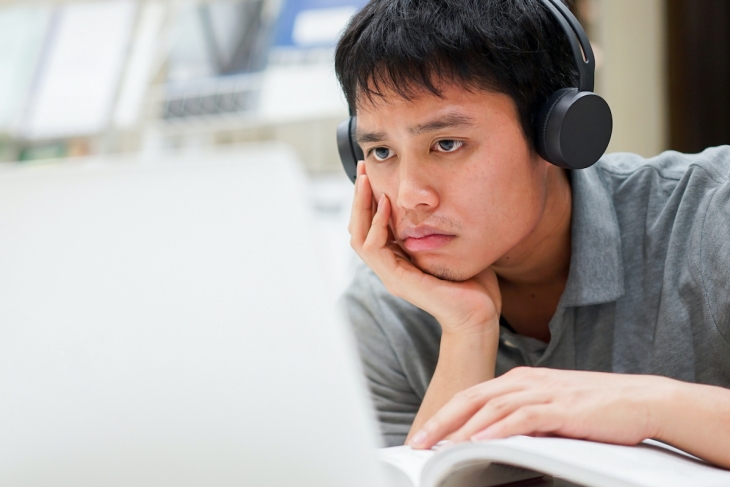After more than eighteen months of pandemic-induced commotion to education, data continue to roll in regarding various negative impacts on young people. A recent report by Angela Duckworth and colleagues examines how high school students were adversely impacted—socially, emotionally, and academically—in the first seven months of disruption. They point the finger for the troubling downswing squarely at attending school remotely versus in-person.
The analysts gleaned data from a large (unnamed) district that participates in Duckworth’s Character Lab Research Network. The sample includes over 6,500 high school students who completed a self-report questionnaire assessing various aspects of their well-being at two points in time. The first was pre-pandemic—data collected in February 2020 when students were in grades eight through eleven—and the second was in October 2020 when they were in grades nine through twelve.
At time two, roughly 4,200 kids had opted to attend school remotely and roughly 2,300 opted for in-person attendance. Duckworth and colleagues measured three separate domains of well-being. The social dimension included questions like “In your school, do you feel like you fit in?” and “Is there an adult in school who you can turn to for support or advice?” The emotional domain included questions like “How happy have you been feeling these days?” and “How sad have you been feeling these days?” And the area of academic well-being included questions like “Compared with other things you do, how important is it to you to do well in your classes?” and “Do you feel like you can succeed in your classes if you tried?”
The analysts controlled for baseline measures of well-being collected from time one as well as factors such as gender, race and ethnicity, grade level, free- and reduced-price-lunch status, English learner status, special education participation, overall GPA and core subjects GPA, home language, and enrolled school. The large number of variables available as controls proved critical because the researchers observed baseline differences between students attending remotely and in person—for instance, in-person students were more likely to be males, White, and ineligible for free or reduced-price lunch—consistent with the non-random assignment to the two learning modes.
This short study yielded one key finding: High school students who attended remotely reported lower levels of social, emotional, and academic well-being with effect sizes ranging from 0.10 to 0.07 standard deviations, as compared to classmates who attended school in person—differences which were comparable across gender, race, ethnicity, and socioeconomic status. However, the differences were significantly wider among tenth to twelfth graders than among ninth graders. The analysts theorize that ninth graders who never experienced high school in person prior to the pandemic were less prone to missing their classmates or teachers. Or perhaps the need to maintain close relationships with peers might increase in later adolescence, meaning that older students are more vulnerable to social isolation. But they were unable to test these hypotheses.
Various researchers have thus far found myriad negative outcomes for young people as a result of pandemic-disrupted education, mostly attributable to mandatory remote learning (versus optional, as was the case here). Analysts somberly observe that emergency-room visits in April through October 2020 by twelve- to seventeen-year-olds for mental-health related issues increased by 31 percent compared to the same time in 2019, which could have been exacerbated by remote learning and the decimation of the academic status quo. Let’s hope that we are moving out from under the dark cloud of non-optional remote learning and the negatives it has engendered. How we will help our kids already impacted by those negatives to regain their balance and momentum requires far more work.
SOURCE: Angela L. Duckworth et al., “Students Attending School Remotely Suffer Socially, Emotionally, and Academically,” Educational Researcher (July 2021).




